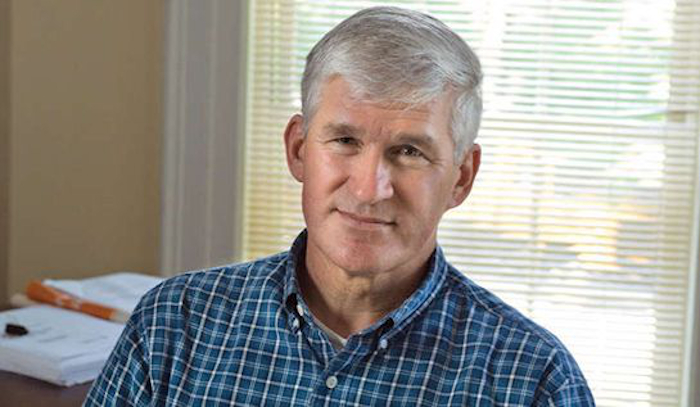
The end of the twentieth century and the beginning of the 21st century, now two decades away, are beginning to become fair game for serious historians, who typically like to keep a buffer of years between themselves and their subjects. Andrew Bacevich, a professor at Boston University and scholar (and critic) of US foreign policy, has entered the field with The Age of Illusions. As the title indicates, he paints the nineteen-nineties and the first decade of the twenty-first century as a lost time, a time when Americans put their faith in nebulous constructs that turned out to be fraudulent, a time that both created and called forth the destroyer of its own gauzy values: Donald Trump. As with many histories edging towards the terrain of the present, Trump looms large over the work.
Bacevich identifies as a heterodox (or, perhaps, simply somewhat anachronistic) conservative. The core of his oeuvre, including books like American Empire, The Limits of Power, and America’s War for the Greater Middle East, emphasizes limits, the responsibilities inherent in power and freedom, and foreign policy realism. These same values carry over into The Age of Illusions. The Cold War, whatever its problems and whatever tensions existed in American society during it, held American society together, Bacevich argues.
In Bacevich’s major structural argument, instead of the Middle American utopia of “Boone City” (from From Here to Eternity), what post-Cold-War American leadership promised was the “Emerald City” of neoliberalism, defined by four lineaments that proved incapable of holding society together in the same way, much less move it forward. These were/are: the expansion of free market globalization; American military predominance; a laissez-faire definition of personal freedom sans responsibilities; and the singular power of the American president.
The last two are the most questionable, one for political reasons and one for comparatively narrow reasons of method. Taking the presidency as one of the defining structures of the time allows for the short-cut Bacevich takes of making the history of the US in his period as the story of Presidents Bush, Clinton, Bush, and Obama, and ended by the coming of another president, Trump. This narrows the scope of the work considerably. Given that Bacevich is writing for a broad audience here, limiting the scope makes sense, but people other than presidents made the age what it was.
Bacevich becomes notably evasive when defining the third element of the neoliberal Emerald City we were promised, that of unlimited individual freedom. What exactly this means is unclear throughout the book, especially as separate from the liberation from controls over capital and business that the expansion of neoliberal capitalism, the first rule of Emerald City, entails. The major victory for personal freedom in this period is that of gay marriage, which was fought tooth and nail, and opposition to which helped guarantee George W. Bush a second term. Was this the consensus for unlimited personal freedom? This is the sort of place where even the most thoughtful conservatives get tripped up. Bacevich’s half-hearted critique of the politics of personal liberation leads to other odd places, such as declaring that Hillary Clinton was a secret radical in favor of thoroughgoing restructuring of society, the same Clinton who supported the Defense of Marriage Act.
In general, though, Bacevich’s depiction of the ’90s and ’00s as an age of fraudulent promises and wasted opportunities rings true. No president who came after the first George Bush questioned the basic premises of the neoliberal Emerald City vision laid out by such figures as Francis Fukuyama and Thomas Friedman. Bill Clinton embraced free trade and embodied the abandonment of responsibility in his own personal life (while harping on the benefits of “personal responsibility” for those he threw off welfare). George W. Bush flirted with imposing more conservative limits on American power, if not on American capitalism, but his administration, Bacevich illustrates, was as surely hijacked as those four airliners on 9/11. This gave the opening for Bush’s “brains,” Cheney, Rumsfeld, and Wolfowitz, to attempt to make American unipolar military dominance a reality, with disastrous consequences. As for Barack Obama, the cerebral, Reinhold Niebuhr-quoting president had the opportunity to turn back on some of the Emerald City’s more damaging premises, but compromised with them instead, embracing drone war as a way to maintain and expand America’s military footprint and failing to rein in Wall Street in any meaningful way.
Bacevich breaks all of this down efficiently and in highly readable language. He includes bits about what two opposite figures of the period were up to throughout: Donald Trump, and himself, Andrew Bacevich. The author sees the two figures as representing the two sides of the Baby Boom generation; not, as commonly thought, those who went to Vietnam, like Bacevich did, and those who didn’t, like Trump, but between those who stood for something in the period (here Bacevich cites some of his anti-war friends on the left) and those who did not. Bacevich at the time was ending the Cold War in the US Army, becoming an academic, and trying to find a place for his voice in the deadly monochromatic debates over US foreign policy (there’s an amusing vignette of his never-followed-up-upon conversation with Bernie Sanders in 2016). Trump was living the tabloid life, perfecting the art of the quote (if not of the deal, as his business failures showed), and eventually forming the persona that would take him to the presidency.
The 2016 election was a referendum on the promises of Emerald City, according to Bacevich, and Emerald City lost big, so big that its backers took leave of their senses and have blown Trump into a larger threat than he is. It’s hard to challenge that assertion, given the febrility with which some liberal commentators have approached the Trump administration when compared to the administration’s actual capacities. But between the approach of climate change disaster—which Bacevich cites as a potential uniter of Americans around a new vision of responsible politics—and the current COVID-19 crisis, allowing someone like Trump to take the wheel of the most powerful nation in the world is an act of world-historical irresponsibility, though the alternatives were and are shy of the sort of structural change needed to tackle these issues. Bacevich agrees with both Trump’s boosters and his severest critics that we are now at a turning point. Something is going to have to change.
In all, The Age of Illusions is an approachable entry in the contest to frame the history of the recent past. The basic framing—the last decade of the twentieth and the first decade of the twenty-first century as a time of boondoggles—seems like it will be one of the main contenders going forward in terms of giving the time a theme. After all, what else other than epoch-defining waste and bungling could have brought us to where we are right now?
Andrew Bacevich, The Age of Illusions: How America Squandered Its Cold War Victory. Metropolitan Books, 256 pp, $27.
Peter Berard is a writer and organizer who lives in Watertown, MA. For more of his work, check out peterberard.substack.com.

